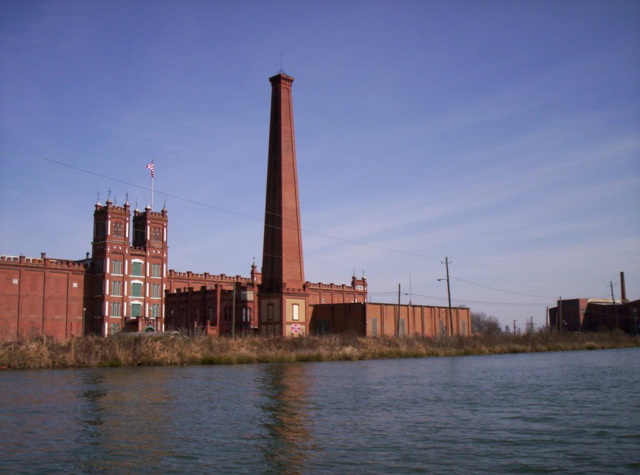Augusta, Georgia Brownfield Cleanup
The historic Sibley Mill was a textile manufacturing site that closed in 2006. Located between the Savannah River and the Augusta Canal, the 21-acre site has contaminated soil and several buildings contaminated with hazardous substances. The commercially desirable canal-side location provided strong incentives for the site to be redeveloped. In 2010, the Augusta Canal Authority purchased the mill to clean up and redevelop the site. The site cleanup was completed in 2018.

The Augusta Canal Authority used EPA’s Analysis of Brownfields Cleanup Alternatives (ABCA) checklist to guide the cleanup and redevelopment process. This checklist requires that the resilience of remedial options be evaluated in light of reasonably foreseeable changing climate conditions. The Augusta Canal Authority used climate change considerations provided by South Carolina Department of Natural Resources to understand and account for expected climate impacts. The site is vulnerable to more frequent and intense storms and flooding, which can impact the mobility of contaminated material left onsite.
By including current and future climate threats in its analysis, the Augusta Canal Authority was better able to understand potential climate change vulnerabilities associated with their planned brownfields cleanup and to provide assurances to future site tenants or owners. In 2011, the Authority started a $1.3 million environmental cleanup which is expected to be highly resilient to climate change projections developed for the area. Rather than isolate and cap contaminated material onsite, the Augusta Canal Authority excavated the contaminated soil and disposed of it offsite. With assurance that the site was cleaned up in a resilient and safe manner, Cape Augusta Digital Properties began a 75-year lease on the Sibley Mill complex in 2016. The property is being developed into a mixed-use technology park with a 20-megawatt data center, called Augusta Cyberworks.
|
How did they do it? |
Applicable EPA Tools |
|---|---|
|
Identified climate risks
|
Review the National Climate Assessment regional projection to better identify projected climate risks. |
|
Considered climate risk and vulnerability when evaluating cleanup alternatives
|
Use one of EPA's brownfields checklists to help consider anticipated climate changes in your Brownfields Corrective Action Plan. |
|
Selected a Brownfield Cleanup Alternative with Adaptive Benefits
|
Use EPA Brownfield Revitalization in Climate-Vulnerable Areas planning tool to help inform selection of appropriate adaptation option. Climate Resilience Planning Tool Use State or Federal guidance to help direct cleanup alternatives and decisions: Georgia Environmental Protection Division (GAEPD) Brownfield |
Similar Cases and More Information
Waste sites, such as Superfund, RCRA, and Brownfields sites, are at potential risk from the impacts of climate change. See how sites are accounting for climate change during cleanup and redevelopment planning.
- Barre City, Vermont Accounts for Climate Change within a Brownfield Redevelopment Plan
- American Cyanamid Superfund Site Reduces Climate Exposure
- San Francisco Cleans Up India Basin Waterfront Brownfield Site as Part of Greenspace Development Effort

